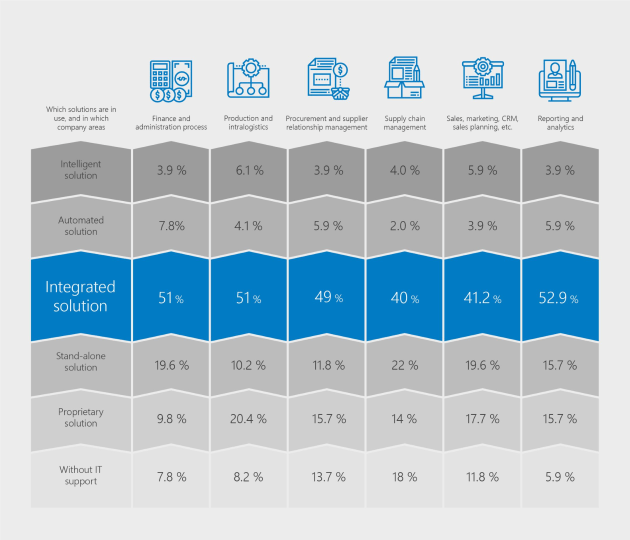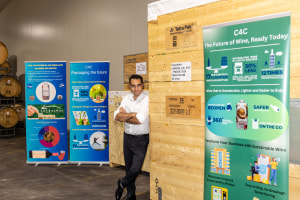The food industry stays strong in any global crisis – it shows resilience, as the experts say. The main reason, plainly speaking, is: people have to eat. Nevertheless, the COVID-19 pandemic has brought new pressures to the industry. The key issue for the future is how the digital resilience of the companies could be improved.
“The great enemy of knowledge is not error, but inertness,” as the British historian Henry Thomas Buckle said back in the 19th century. During a crisis, time seems to move at a faster pace, which also becomes evident in the companies of the food industry.
The COVID crisis in particular is massively accelerating interest in tried-and-tested solutions around digitisation. This is certainly good news for the resilience of businesses.
Technology must deliver in difficult situations
Although most companies have managed to get through the crisis, the overall situation is still difficult. Sales have crashed particularly in the foodservice sector. The grocery retail industry is in a better position, despite the fact that not every business supplying retailers like Rewe, EDEKA, Costco, Trader Joe´s, Tesco, Morrisons started the year with a profit.
Add to this the everyday issues of the food companies: supply chain pressures, labor shortage, the need for production efficiency in competitive markets, and the looming price pressure – which, according to a recent McKinsey study titled “Disruption and Uncertainty”, is expected to intensify, as the price sensitivity of consumers is increasing.
To strengthen the resilience and competitiveness of operations, information technology must now ensure three things:
- Flexibility: For food businesses to succeed and prosper, they must be able to cope effectively with both the expected and the unexpected. A high degree of digitally enabled flexibility is called for in the operations as well as in planning and forecasting.
- Efficiency: Especially in just-in-time markets, maximised efficiency is essential – at every stage of the value process. The already small margins should not be eaten up by the inefficiency of shop-floor processes.
- Transparency: An appropriate KPI system ensures that executives can do the right thing, at any time. This could also mean that products with a negative margin are removed from the assortment. Other key issues are product safety and an effective traceability concept.
Use of integrated systems to enhance digital resilience
The digital resilience of food companies actually is not so bad, as the results of the CSB survey on the impact of COVID-19 on the food industry have shown. Specifically, businesses with integrated IT and ERP systems are in a good position with regard to control and responsiveness of their company.
The impact of the COVID-19 pandemic has highlighted the particular benefits that digitization brings to companies in terms of virtual collaboration, flexibility and agility of processes, fast and precise planning, and cost reductions. The survey found that in production and administration, 51 per cent of respondents relied on integrated solutions, while 53 per cent used them for reporting and analytics.
However, only one in 20 companies uses intelligent systems, while there are still major opportunities through the integration of market data – especially with regard to changing shopping habits of the consumers, or the processes with suppliers, commerce, or customers.

Digitisation is the core competency of food companies
Yet, despite the current achievements, there is no reason to suspend any further intensive digitization of the company. The survey participants agreed that in the future, digitisation would be even more crucial for the economical operation of a factory and for its resilience during a crisis.
Having a firm grip on digital technologies is therefore increasingly becoming a core competence of the companies. Indeed, the management of the value-adding processes that take the raw materials to final products would be unthinkable without digitisation. From the receipt of goods through production, packing, inventory management to shipment, digitization helps to make the process as flexible, efficient and transparent as possible.
The next steps need to be taken now. The goal is to achieve full digital support of the value creation in order to utilise further expected benefits for efficiency and resilience. The following points reflect the full bandwidth:
- Digital monitoring and control of raw materials in goods receiving enable continuous assessment of the vendors, a vital factor when dealing with natural products that do not have a standardized quality.
- Effective labeling and identification – using barcodes, RFID chips, sensors, and image recognition – will provide a good overview and ensure seamless documentation. At the same time, this ensures seamless traceability as the data is passed electronically from one processing step to the next.
- Where the lot sizes in production are decreasing, the number of order changes will increase. This leads to overall higher changeover times, great uncertainty in production and staff planning, and added pressure on the productivity. Software-aided production and forecast planning helps to counteract those challenges.
- With the right, precise, and up-to-date measures, executives are able to monitor the performance, to identify problems, and to intervene systematically in order to further optimise the day-to-day operations. Developing digital twins will further improve the KPI systems.
- The digital optimisation of the inventory helps to prevent excess stocks while securing timely replenishment.
- Remote monitoring of equipment will help to anticipate problems and plan in required maintenance to minimize downtime and maximise Overall Equipment Effectiveness (OEE).
- ERP systems are able to communicate with the equipment in production or picking. Pick-by-voice and pick-by-vision systems guide the employees to the correct area of the warehouse, where lamps and digits indicate the exact position.
- The introduction of automation and robotics also supports the effective interaction of data and goods flows. Many food companies have developed groundbreaking standards in intralogistics, specifically in automated production and packing system, automatic depalletisers, sorters, and high-bay storage facilities for pallets or single crates.
Looking to the future
One thing is clear: available tried and tested digitisation technologies will be introduced quicker than especially exciting innovations. At the same time, today’s technologies are constantly changing and continually developed further. When companies introduce a new IT system, they also need to focus on the future.
Artificial intelligence (AI), the Internet of Things (IoT), big data, and blockchain are all new developments that, while still in their infancy, may well have a key role to play in the coming years.
AI is in fact already taking on increasing significance in new projects. To maximise its benefits, it is important that it is matched to the right type of application. This will ensure that AI can contribute to solving a specific problem or meeting a particular requirement, with a clear economic advantage such as an increase in sales or margins.
One example where AI is now being used very effectively is for the grading of meat carcasses using cutting-edge image processing technology. This system can automatically determine the quality of the meat and decide the best utilisation of the carcass to deliver effective yield optimisation; or establish its optimal further processing into finished products.
Looking even further ahead, pick by voice and pick by vision as well as other BMI technologies could be joined by the introduction of “brain interfaces” – via electroencephalography and holographic displays, operators can literally control their production machines through mind-reading.
Combining all this in a smart way will ultimately take the resilience of the food industry to an even higher level.
For further case studies from CSB-System, visit the website, YouTube or LinkedIn.






